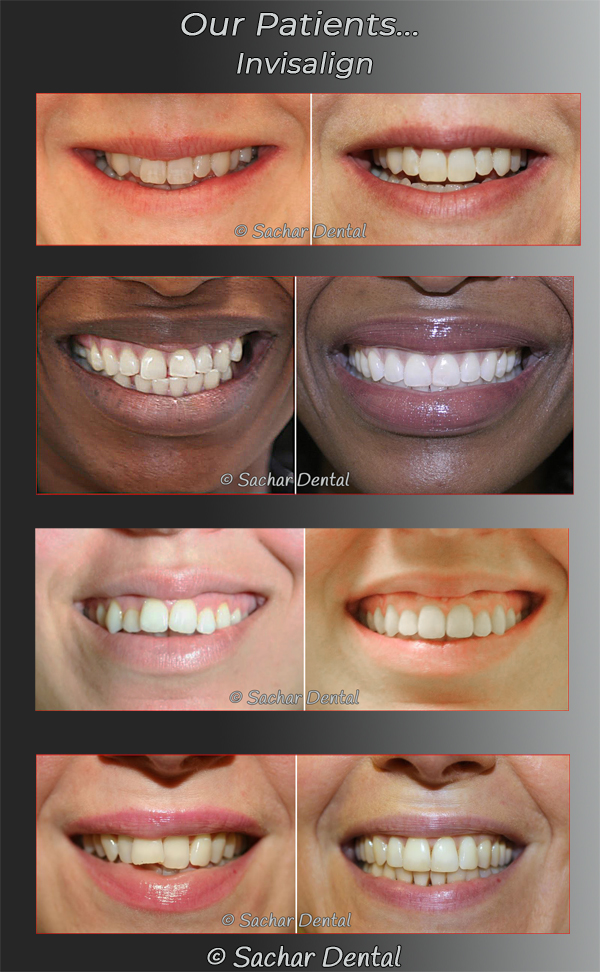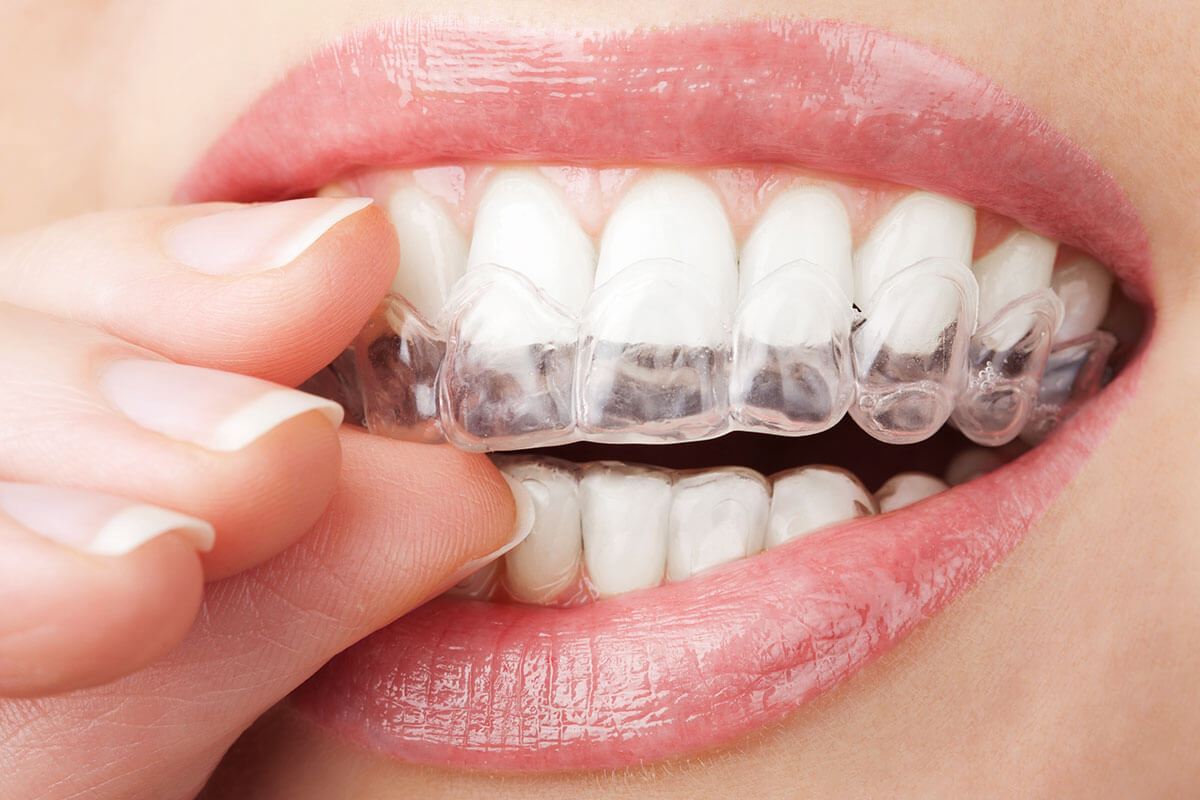Preserving Oral Health While Utilizing Invisalign: Tips for a Smooth Experience
Preserving Oral Health While Utilizing Invisalign: Tips for a Smooth Experience
Blog Article
Invisalign vs. Traditional Braces: Which Choice Is Right for You?
When thinking about orthodontic therapy, the selection in between Invisalign and typical dental braces offers numerous important factors that warrant careful assessment. Invisalign offers a very discreet alternative with removable aligners, while conventional dental braces give a much more visible yet reliable remedy for extreme imbalance. Each alternative incorporates distinct benefits and drawbacks connected to looks, convenience, treatment duration, and expense. Understanding these subtleties is crucial for making an educated decision that lines up with your individual choices and lifestyle. The inquiry remains: which option will ideal fulfill your orthodontic demands and expectations?
Introduction of Treatment Choices

On the other hand, typical dental braces are composed of steel braces and cords that are bonded to the teeth. This method uses continuous stress over time to accomplish positioning. While effective for complicated orthodontic issues, traditional dental braces require regular visits for modifications and can posture challenges in keeping dental hygiene because of the difficulty of cleansing around wires and brackets.
Both alternatives have their values, and the option typically pivots on particular oral problems, way of living choices, and client conformity. Eventually, getting in touch with an orthodontic expert is essential for identifying one of the most suitable therapy strategy customized to private needs. Comprehending the nuances of each alternative can dramatically influence the overall success of orthodontic treatment.
Aesthetic Factors To Consider
A significant factor affecting the choice between Invisalign and standard braces is the aesthetic charm each treatment provides. Invisalign aligners are crafted from clear plastic, making them virtually undetectable when put on. This very discreet look is especially appealing to teens and grownups that might feel awkward regarding their orthodontic therapy. The capacity to maintain an all-natural smile throughout the alignment process can dramatically improve the patient's confidence in social and expert settings.
On the other hand, typical dental braces are composed of steel brackets and cables, which can be much more noticeable. While advancements in orthodontic modern technology have actually caused the growth of smaller brackets and tinted elastics, conventional braces still maintain a more noticeable account. For some individuals, the exposure of dental braces may discourage them from seeking essential therapy.
Ultimately, the option between Invisalign and typical dental braces might depend upon personal choices relating to looks. Patients that prioritize discretion commonly favor Invisalign, while those who are much less concerned about exposure may choose traditional dental braces. Understanding the visual ramifications of each choice is important for making an informed decision that lines up with one's way of living and preferences.
Comfort and Convenience

In terms of comfort, Invisalign image source aligners are detachable, allowing patients to enjoy their favored foods without limitation and maintain ideal dental health. Cleaning and flossing are simplified, as the aligners can be gotten during these routines, whereas conventional braces call for cautious navigating around wires and brackets.
In comparison, typical braces demand routine changes, making them less hassle-free for those with hectic routines. On the whole, the convenience and ease of Invisalign make it an attractive choice for numerous individuals seeking orthodontic treatment.
Therapy Duration and Performance
While both Invisalign and typical braces work in remedying oral misalignments, the period of therapy can vary considerably between both options. Typically, Invisalign treatment can take anywhere from 12 to 18 months, depending upon the intricacy of the instance. The clear aligners work by slowly moving teeth into their desired positions, and normal follow-ups with an orthodontist aid make certain development stays on the right track.
In comparison, standard dental braces frequently require a longer commitment, generally ranging from 18 months to three years. This is because of their set nature and making use of cords and braces, which can be a lot more reliable for extreme imbalances and complex situations (Invisalign). The treatment efficiency of typical braces is well-documented, as they enable precise adjustments and better control over tooth motion
Ultimately, the choice between Invisalign and typical braces might hinge on both the expected treatment duration and the certain dental problems at hand. Consulting with an orthodontist is crucial, as they can provide tailored suggestions based on private demands, ensuring the picked technique straightens with wanted outcomes and timeframes.
Price Contrast and Insurance Policy Options
Cost plays a considerable role in the decision-making procedure for people thinking about orthodontic treatment, whether choosing Invisalign or traditional braces. Typically, the cost of Invisalign varieties from $3,000 to $8,000, while typical braces generally set you back between $2,000 and $6,000. Factors affecting these expenses include the complexity of the situation, the period of treatment, and geographical area.
Many oral insurance plans supply partial insurance coverage for orthodontic treatments, yet the specifics can differ widely. Usually, standard dental braces might be extra often covered by insurance coverage strategies contrasted to Invisalign, which you could try this out some insurance firms categorize as a cosmetic procedure.
In addition, numerous orthodontic techniques offer flexible layaway plan, making both therapy choices extra available. Patients need to ask concerning potential financing options and discounts for upfront repayments. Evaluating the overall expense, including insurance benefits and settlement plans, is essential for making an educated choice that aligns with both aesthetic preferences and spending plan considerations.

Verdict
In summary, the option in between Invisalign and standard braces depends upon several variables, consisting of visual preferences, comfort, therapy duration, and cost. Invisalign supplies a very discreet, removable option that facilitates oral hygiene and nutritional flexibility, while typical dental braces Continue may be better for complicated oral issues and often come at a lower cost point. Ultimately, assessment with an orthodontist is important to evaluate individual conditions and determine the most ideal treatment choice for attaining ideal dental placement.
When thinking about orthodontic treatment, the option in between Invisalign and standard braces presents a number of crucial elements that warrant careful examination.Contrasting Invisalign and typical braces reveals distinctive therapy options for orthodontic correction.While both Invisalign and traditional dental braces are efficient in dealing with dental misalignments, the duration of therapy can vary substantially in between the two choices.Price plays a significant role in the decision-making process for individuals considering orthodontic therapy, whether choosing for Invisalign or traditional braces.In summary, the choice in between Invisalign and traditional dental braces hinges on several elements, including visual preferences, comfort, therapy period, and price.
Report this page